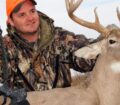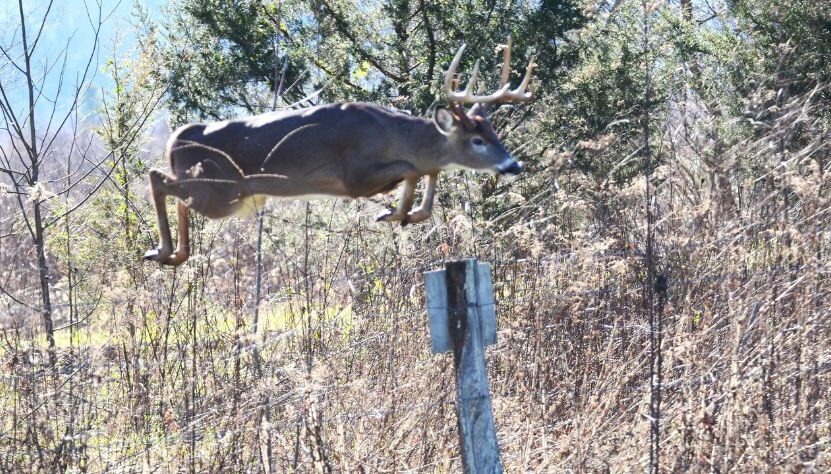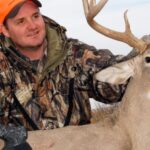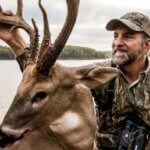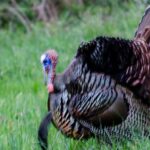Editor’s Note: Chris Kirby, owner of Quaker Boy Inc., bought his family’s business that was started in 1974 by his dad Dick Kirby, one of the legends in the calling industry. Dick Kirby was a very-versatile game caller, and Chris has followed in his footsteps, winning all the major turkey-calling championships after his dad won the World Champion of Champions, the World’s Goose Calling Championship, the World’s Moose Calling Championship, and others. Many outdoorsmen believe Chris Kirby was born with a turkey call and a deer call in his mouth because he can’t remember when he wasn’t calling critters. I’ve asked Kirby to tell us what he says to deer from the beginning of bow season until the end of rifle season to give you ideas for next year’s deer season. One of the best ways to learn a new technique or try a new product is to use it after deer season. If you’ve never attempted to call deer, leave your bow or gun at home, take some deer calls into the woods, and see what happens. Chris Kirby believes that if you’re a deer hunter, you’re a deer hunter all year.
John E. Phillips: What call will you use and why during the early season to make a buck?
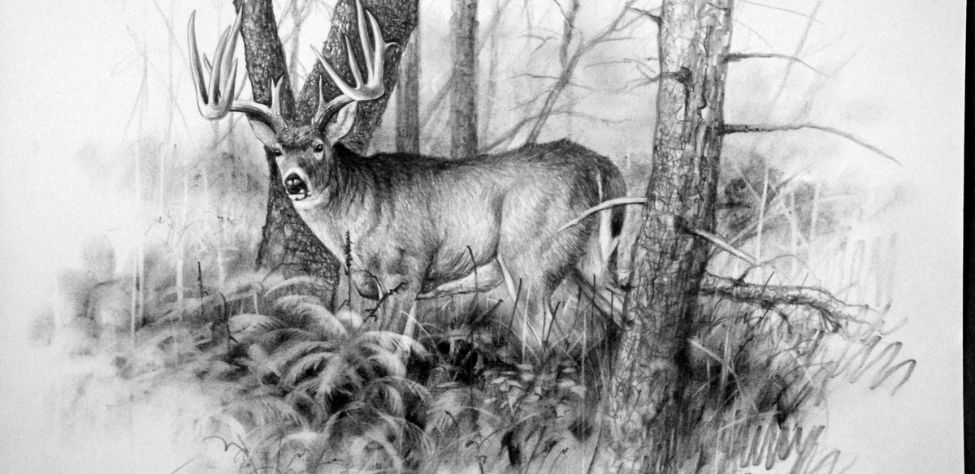
Chris Kirby: I won’t do much calling during the early season because the weather is hot. The bucks won’t be moving much during daylight hours. I’ll still be hunting food sources and bedding areas, but at this time of the year, I prefer to hunt travel corridors and pinch points. Pinch points are where two different types of terrain come together. For instance, if a creek’s on the edge of a young pine plantation, where the corner of that pine plantation almost touches the creek, and a strip of hardwoods is on the creek bank, that’s a pinch point.
Another pinch point may be where an agricultural field almost touches a young pine plantation. In any place where two different types of habitats almost touch each other, deer tend to travel through that narrow strip of woods to get from one side of the pinch point to the other.
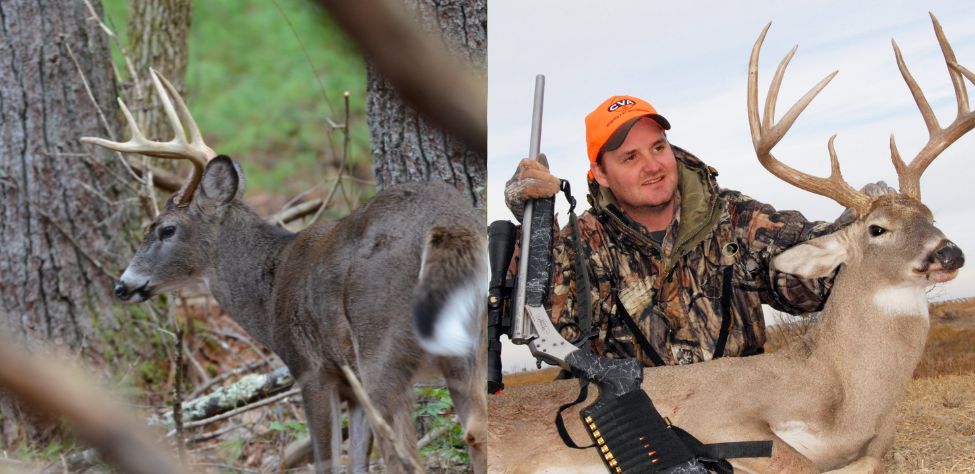
Another place I hunt for bucks in the early season is apple trees that may be in the middle of a hardwood stand. Early pioneers planted apple trees in many northern states, primarily for making apple cider. As land ownership changed and woods grew around these apple trees, these trees continued to produce apples that created a soft mast that deer loved to eat. Chestnut, beech, and early-dropping oak trees may be in high demand but in short supply for deer food. However, those places will be productive in finding numbers of deer tracks, deer droppings, and signs of deer feeding. Deer often will come by these trees in the early season to see if the trees have started dropping their fruits or nuts.
Look for water holes or springs if you’re hunting in Texas or the Mid-South states. Plan to hunt there in the middle of the day when the temperature’s usually hot and the deer need water.
I prefer to call Bucks early in the morning during the early season when the temperature is still cool, and the deer may be heading back to their bedding places. I like to use soft tending grunts on a Quaker Boy Ridge Runner Hex, an ergonomically enhanced freeze-proof grunt call. It has a realistic tone quality and an adjustable unique o-ring, reed, and tongue system. The collapsible tube enhances tone quality while creating significant variations in your calling.
I’ll give three or four grunt calls in succession, and every now and then, I’ll give a Bleat-in-Heat call. I want to create an image in the buck’s mind that there is a buck and a doe in this area and that the doe just may be coming into estrus. I’ve often found that older-age-class bucks that are very territorial will come in to try and find this new buck that they think has moved into their territory and may be trying to steal and breed some does from that older buck’s area.
Looking for more content? Check out our YouTube channel and watch “Avoid Overhunting a Spot – Bob Sheppard” by John E. Phillips.

How to Hunt and Take Big Buck Deer on Small Properties
In this book, you’ll hear from 14 hunters who either have gained permission or leased properties as small as six acres to as much as 250 acres, and how they consistently take older-age-class bucks off these little lands.
VERSIONS: AUDIBLE, KINDLE & PRINT

Jim Crumley’s Secrets of Bowhunting Deer
Using a black magic marker and a gray work jumpsuit, Jim Crumley of Buchanan, Virginia, drastically changed the nature and purpose of hunting camouflage when he created the first sportsman’s camouflage – Trebark. Crumley’s love of bowhunting and his desire to be more invisible changed hunting clothing forever.
In this hunting guide, he shares the wisdom that he’s learned throughout his lifetime about how to be a hunter, how to find a deer lease, how to scout for deer, and more.
Special features include how to:
- Have a magic 60 acres to hunt
- Decide the best equipment to use
- Find deer year-round
- Locate land to hunt
- Know the best place to put your tree stand
- Get bucks within bow range
VERSIONS: AUDIBLE, KINDLE & PRINT

How to Hunt Deer Like a Pro
How do you know if the land you hunt has a trophy deer on it? Wildlife manager Bob Zaiglin, of Uvalde, Texas and Jim Crumley, the father of modern-day hunting camouflage, tells you how to find out. GPS can make finding and taking that trophy buck easier. This hunting guide will teach you how to hunt big bucks where no one else can find them, how to call deer, and how to become versatile as a deer hunter, so that if one deer tactic doesn’t work, another one will.
In the chapter, “How to find Bucks at Scrape,” Dr. Keith Causey, retired professor of Wildlife Science at Auburn University, describes the best way to hunt a scrape.
Brad Harrison of Neosho, Missouri, is a nationally-known videographer, professional deer hunter and master at calling deer. Another master is Will Primos of Primos Game Calls. These two experts will tell the best deer calls and when to use them in this book.
And for over 20 years, Bo Pitman, lodge manager of White Oak Plantation, has been studying deer movement patterns. He explains what types of conditions are best for predicting deer movement.
VERSIONS: AUDIBLE, KINDLE & PRINT

Deer hunting and deer hunters are drastically changing each year. To learn new techniques for hunting deer and have more places to hunt, I’ve interviewed some of the best deer hunters in the nation and share their tactics in How to Hunt Deer Like a Pro: Volume II.
In Chapter 10, Jacob Lamar tells you his tactics for consistently taking older-age-class bucks on public lands in several states. Chapter 11, Bob Walker explains how to find places on public lands where you can hunt that 99 percent of the other hunters never have considered hunting. The Bonus Chapter with David Ramey tells you how, where, when and with what equipment to take big Kansas bucks on public lands by hunting in 100-degree weather when others won’t hunt.
Chapter 13, Mark Drury, his family and his guests take mature bucks every season by having more small places to hunt rather than one large property. Drury explains the strategy of having satellite farms to hunt that only may be 50-150 acres each or less. Chapter 15, Pat Reeve, who hunts far-northern states and Canada, says, “I don’t like hunting for mature bucks until the weather is 20 degrees or less.” Chapter 4, Dr. Larry Marchinton says that funnels are the most-reliable stand sites to hunt for big bucks and tells why.
VERSIONS: AUDIBLE & PRINT
Tomorrow: Call Buck Deer During the Pre-Rut


